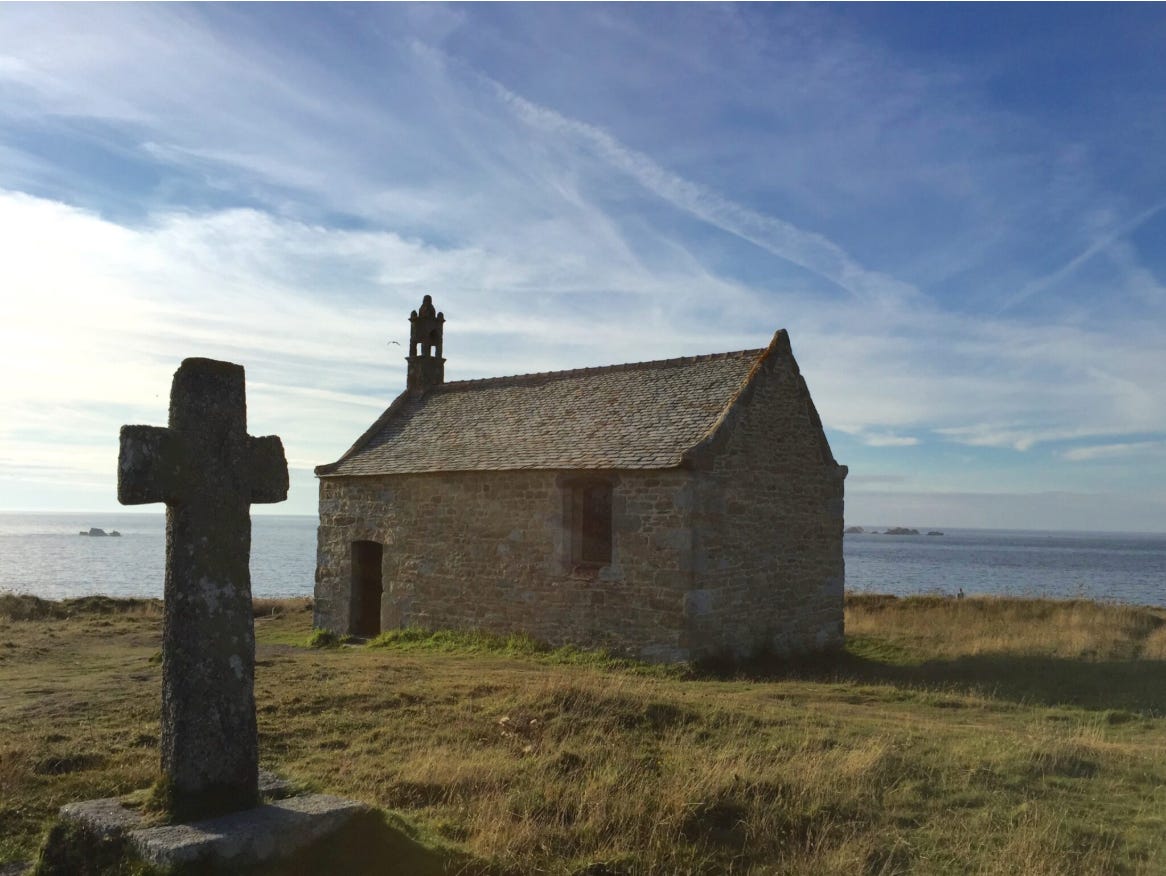28th July ~ St Samson, A Child of Promise
Venerated liturgically in South Wales and Brittany.
ST SAMSON, BISHOP OF DOL (c. A.D. 565)
St Samson was one of the most important of the British missionary bishops of the sixth century, and he is to this day venerated liturgically in South Wales and Brittany. He was born about the year 485, his father, Amon, being of the Welsh province of Dyfed, and his mother, Anna, from Gwent, he being a “child of promise” after his parents’ long childlessness. Out of gratitude the child was, at the age of five years, dedicated to God in the monastery founded and governed by St Illtud at Llantwit in Glamorgan, a very nursery of saints. The young Samson was most virtuous in his life, quick in his studies, and austere in his monastic observance, so he was early made deacon and priest by St Dyfrig (Dubricius). This excited the jealousy of two brothers, monks and nephews of St Illtud, one of whom aspired to succeed his uncle as abbot of the house. They therefore tried to remove Samson by poison; but he remained unharmed, whereupon one of the brothers repented, as did the other after he had had a seizure when receiving communion from his victim’s hand and been cured at his prayer. Samson obtained the abbot’s permission to go to an island where was a small community governed by one Piro. This island is usually identified with Caldey (Ynys Byr), off the coast of Pembrokeshire. Here he “ceased not by day or night from prayer and communion with God, leading with untiring patience a wonderful, isolated, and above all, heavenly life, spending the whole day in working with his hands and in prayer”. His father being, as he supposed, near death, sent for Samson to administer the last rites. At first he was unwilling to go out into the world, but Piro rebuked him and appointed a deacon to bear him company, and when he had ministered the sacraments to his father, the man recovered. Whereupon Amon and his wife wished to retire from the world, and when provision had been made for her, Samson with his father and his uncle Umbrafel and the deacon returned to the island. Here they found St Dubricius spending Lent in retreat there, according to his custom, and when he heard of certain marvels that had happened on their journey, he had Samson appointed cellerar to the community. Shortly afterwards Piro died* and Samson was made abbot in his stead. In this office, while himself being regarded as a hermit, he brought the monks gently into better discipline, and also made a journey to Ireland; a monastery which was there confided to him he put in charge of Umbrafel. But on his return he refused to continue as abbot and retired, with Amon and two others, to somewhere near the river Severn and there they lived as hermits.
But his peace was not for long undisturbed. He was made abbot of the monastery “which, it is said, had been founded by St Germanus”, and was consecrated bishop by St Dubricius. He soon after, on Easter eve, had a vision in which he was told to go beyond the seas. Accordingly he went into Cornwall, with his companions, and landed “with a favourable wind, after a happy passage” at or near Padstow. He proceeded towards the monastery called Docco (now Saint Kew), and when the monks heard of his approach they sent one of their number, the most prudent and a man with the gift of prophecy, Winiau, to meet him. This was not, however, the sign of an eager welcome, for when St Samson proposed to stay at the monastery for a little, Winiau tactfully intimated that it was not convenient, “for our discipline is not what it was. Go on your way in peace…”
Samson took his words as an indication from God, and went on across Cornwall, travelling by means of a car or chariot which he had brought from Ireland. Going through the district of Trigg he converted a number of idol-worshippers by restoring miraculously a boy who had been thrown from a horse; he founded a church at Southill and another at Golant, coming by way of the Fowey river to its mouth, whence he took ship to Brittany, leaving his father in charge of a monastery at Southill. It is possible that before leaving Cornwall, where he must have spent a considerable time, he visited the Scilly Islands, for one of them is named after him.
Of Samson’s work in Brittany his biographers speak most of his miracles; he made missionary journeys in all directions, including the Channel Islands, where a town on Guernsey bears his name, and founded two monasteries, one for himself at Dol and another at Pental in Normandy. He helped to restore to Brittany its rightful prince, Judual, against his rival Conomor in the year 555. Upon visiting Paris Samson attracted the favourable notice of King Childebert, who is said to have nominated him bishop of Dol, and he is probably the “Samson, peccator, Episcopus” who signed the acts of the Council of Paris in 557; but Dol was not a regular episcopal see until the ninth century. St Samson died peacefully among his monks about the year 565.
From Butler’s Lives of The Saints



